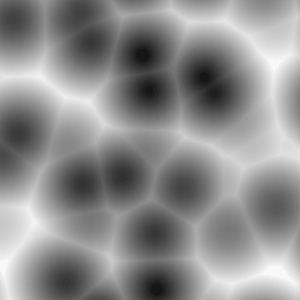Introduction
This page presents a technique for generating a point cloud that mimics the sinuous distribution of stars embedded within a nebula - figure 1. The shader shown in listing 2 is similiar to the one used to bake a 3D sierpinski gasket.
Because the shader
is used on a single point primitive we can be sure it will only be called once.
For that reason the shader can perform calculations that otherwise would be
prohibitively expensive.
The shader consists of a loop within which,
- a random point is generated,
- the point is offset by -0.5, -0.5, -0.5,
- the point is used to define a vector,
- the vector is normalized,
- and its length randomized,
- a density function calculates a value that determines whether or not the coordinates of the vector should be baked into a point cloud.
The calculations within the loop are visualized in figures 2 to 5.




